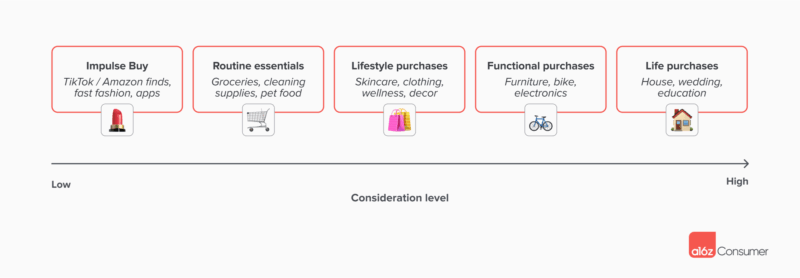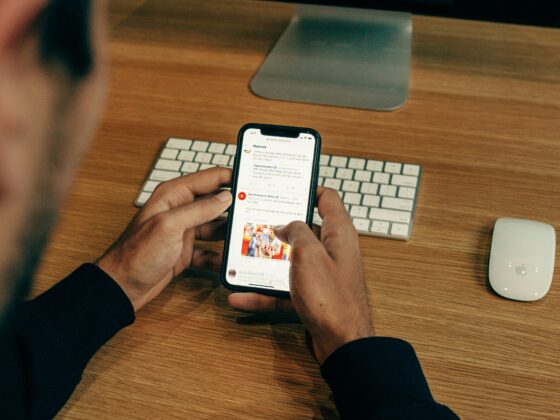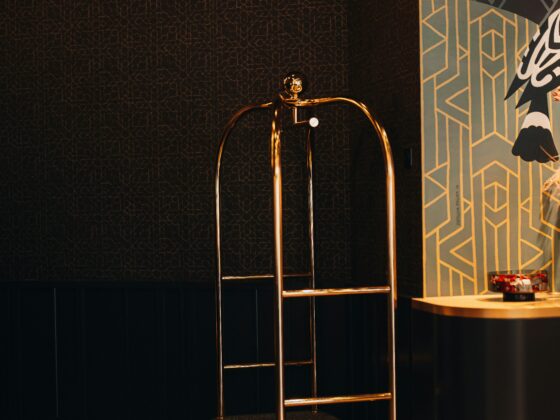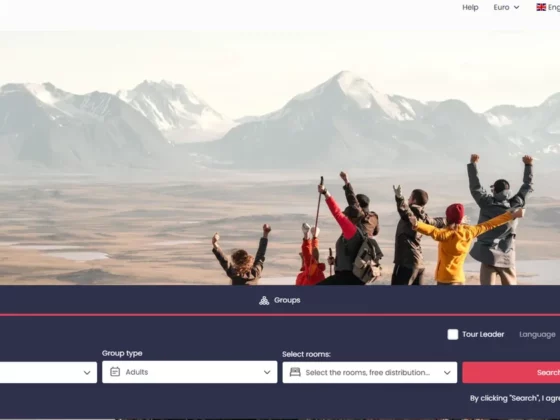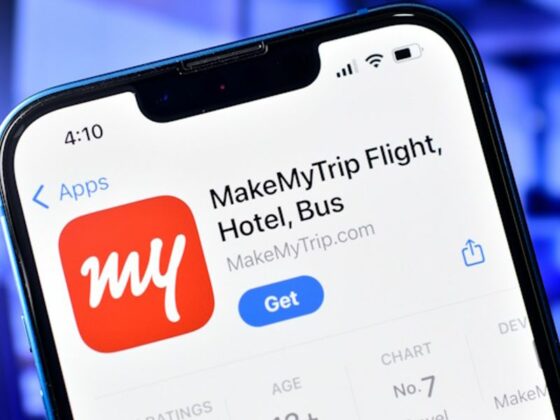Josiah [intro]: Tom Luersen is the president of CoralTree Hospitality Group. In this episode, you’ll learn the power of embedding your brand in the community, and how Tom and his teams have done this in some of the locations they operate in.
Josiah:
The company I was at a couple years ago did an offsite at Terranea, and I was really impressed by the sense of place that property has, but also even leading up to the event. The way that the whole company, it was about 300 people, bought out the place and it was really positioned within the company as this sense of place, this integration with the community, its surrounding area is going to transform the week that we have there. And you talked about projects being indigenous to their local communities. You’ve also spoken before about you’re not only stewarding a business, but the community broadly. So my question for you is, how do you think about that in each of these diverse communities you’re in? How do you think about stewarding the community and the community engagement for your businesses?
Tom:
I think the first thing you do is you think about it and then you go do something. You go ask the community what they’re looking for. You study the community. It’s no different than doing a thesis in your college writings, or doing a research project. Don’t go in with an expectation of what the canvas, the empty canvas should look like.
Go in truly with an empty canvas. Gather information. Find out what’s available in the market. Find out what’s not available in the market, maybe there’s a niche to fill. Ask questions. Get people to be included in the process. There’s hints of focus groups and charettes that invite people to come in.
We just hosted yesterday, we brought in what we call our bootcamp. These are all of our executives that have just joined the company in the last three months. We host them at a hotel here in Denver, in Golden Colorado called Hotel Eddy, The Eddy Taproom.
It’s a small boutique hotel, 49 keys, very, very unique. When you go in there, you can get an Eddie beer, you can rent an E-bike that’s provided by the local provider. The art on the wall in the private dining room is a local artist. It’s on a consignment wall that changes every three months, and it’s all from Golden.
They have a story, Golden is famous for a beer, called Coors. And the Coors plant is right there. So there’s a relationship and a storyboard about Coors at our hotel. We don’t have a relationship with them, we’re just telling them a story.
So that is that sense of place. When you come to Hotel Eddy, you’re in Golden, Colorado. We have on the wall, when you walk in, a chalkboard of all the things going on in Golden, Colorado, not at our hotel, in Golden Colorado, including the restaurants that we compete with, including some of the other services that we have at our hotel. But our attitude is, “We’re going to tell you a story because you’re in Golden Colorado. This is a special place. And you should learn about it.”
When you go into your room. We don’t have a “Do Not Disturb Sign.” It’s a little antiquated. We have here in Golden, we’re right in the hills of the mountains. We basically have a little sign that says, “The Bear is Sleeping Right Now.” And the bear is the metaphor for the animal and the wildlife of Golden. Those are little stories that creates the sense of place.
We have a phrase we’ve used over years. “Sense of place, distinctive by design.” So it’s not just a sense of place. This Hotel Eddy is built with brick that was harvested and curated in Golden Colorado nearly 50 years ago. And we brought the brick back to life so that it felt like it’s been a part of this community for a long time, even though it’s a new hotel.
That’s what we’re trying to do in every one of our properties. We’re telling a story by the way we design something. We’re connecting to the place. The name of the beer that we serve is Hotel Eddy. It’s the Eddy Beer. The E-bikes are connected to the local vendor who’s been in that marketplace for 40 years. Those are the stories that we tell about.
So we research it. We use all of our creative skills, we talk to our ownership, we talk to the guest and we try to find that secret sauce.
Tom:
Terranea Resort. There’s a tree, if maybe you think about your arrival experience, there’s a tree in the middle of the [inaudible] and the motor court and the arrival experience. A tree we built a $400 million resort around. We protected it. We brought it from a different spot and put it there. And it’s a story of this tree that’s nearly over a hundred years old, and if you talk to our bell man, our valet, they can tell you all about the indigenous part of this tree, what it used to be on this land. And we celebrated the tree.
In our restaurant, the salt doesn’t come from a store, it’s the salt that’s been harvested out of the ocean, that we do it on site. We use it in our sea and salt. It’s a story about being a Terranea is on the ocean front. That’s a big part of the story there.
Those are simple things that we do. We have a falconer that comes around on weekends at Terranea, and it’s because there’s birds of prey all around the coast. You’ve been on there where you’ve seen the seagulls and all the other birds that fish from there.
So he’s out there teaching the youngsters and the adults like me about what Falcons do, and you can pet and touch it. That’s a story. And he doesn’t talk about, the Falcon. Talks more about how the Falcons live on the coast, and so it’s educational experiencing. Those are the types of things that we’re trying to do at every one of our properties.
Josiah:
It is amazing, and I think to just briefly comment on those two, so you can see what it’s like on the other side as a guest. So I saw the power of my company spending a week at Terranea. In the stories that you mentioned, a number of those, I’m hearing from colleagues, I’m hearing from others. It had this bonding moment. It’s a story that was retold, and I imagine there’s many other companies out there that would benefit from hosting some sort of a thing at Terranea. You have the individual connection to it, but you also have, “Here’s the organization that’s visiting.” It is cool.
I think just with Hotel Eddy and what you’re doing in Golden, it stands out to me because my wife’s from Denver and I’m from San Francisco, so I don’t know Denver that well. I might be forgiven to kind of roll up Golden with Denver and just call it all Denver. But I’ve actually had a number of my closest friends move from San Francisco to Golden and talk about the unique nature of why that community is so special. And I think if it wasn’t for that, I might not appreciate that.
But I think if I stay at this hotel, those differences are highlighted and that’s what makes travel really fun and special. Right? It’s not just Metro Denver. No, it’s Golden. And Golden has a really unique personality to it.
Tom:
We have a hotel in Denver, the Denver Magnolia. It’s a great urban hotel. It used to be a bank. It’s got its own story. There’s a bank vault in the lobby that is to reminisce its history. But it’s very different than Hotel Eddy that’s 10 miles away in a suburb of Denver called Golden. So we couldn’t just do the same thing each place.
Each place has to have its own specialness. Then we have to learn how to tell the story and deliver it, what we call operationalizing the brand. We have to operationalize the brand. It’s one thing to tell the story and to have the brand, how do you operational, how do you execute it every day? So that feeling of the brand, the ethos is there.
Josiah:
Tell me a little bit about that. I’m really interested in operations. I started my career as a marketer, but I’ve kind of realized there’s a limit to that. You have to operationalize it. So what’s involved in that?
Tom:
A lot of training and a lot of implementation, a lot of detailing. We’ve got brand companies that are fabulous and creative in what they do, whether it’s your mark, or it’s the branding of the uniforms. All of those things create a brand. It’s not just your logo of course, or how your website looks.
So when you come into Hotel Eddy, as a way of example, the staff at the front desk, they’re not in uniforms to you, no disrespect to that firm. They’re in blue jeans with a proper shirt. That fits into the culture of Golden.
Conversely, when you go into a Wave Hotel in Lake Nona, which is a high-end lifestyle award, award-winning restaurant, it’s a much more sophisticated, savvy uniform. Operationalizing the brand, is that kind of detail. What is the uniform?
What’s the music? The music in the Wave is a little bit louder, a little bit more vibrant, a little bit more new wave music. While when you go into Golden, it’s got a little bit more of the mountain sound, a lot of acoustics. That’s intentional. That’s what we mean by operationalizing the brand.
The language, we don’t talk about employees. I didn’t use the word employee yet today. We talk about team members. That’s our culture. We don’t have employees. Employees feel like something that’s back in the forties on an assembly line. We have team members that are part of our brand as a company, our culture.
We don’t have human resources in our company. We have people services. And that’s our nomenclature because human resources sounds like a department you go to when you’re in trouble or you’ve got a benefit question. We have those issues, but people services is how do we serve the people that are leading our company? So that’s branding, that’s operationalizing your brand.

